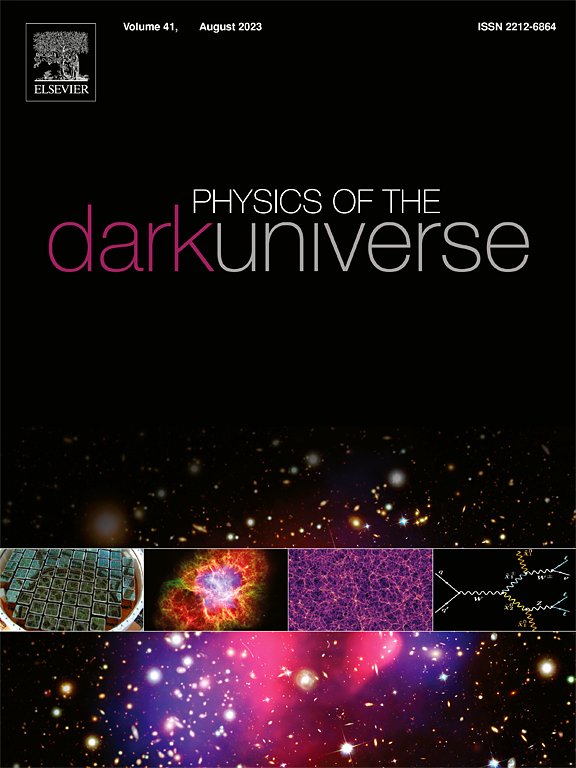Thermodynamic topology and photon spheres of dirty black holes within non-extensive entropy
IF 5
2区 物理与天体物理
Q1 ASTRONOMY & ASTROPHYSICS
引用次数: 0
Abstract
In this paper, we investigate the intricate thermodynamic topology of static dirty black holes within the framework of non-extensive entropy models, including Rényi, Sharma–Mittal, and Barrow statistics. Employing the generalized off-shell Helmholtz free energy method, we rigorously compute the thermodynamic topology of these black holes, deriving their topological classifications for each entropy model. Our analysis reveals that parameters such as the Dilaton parameter , the non-extensive parameter of Rényi entropy, and the parameters and of Sharma–Mittal entropy, along with the parameter of Barrow entropy, have a substantial impact on the topological charges of black holes. These findings provide new insights into the topological classifications, underscoring the complex interplay between different entropy models and their influence on black hole thermodynamics. Additionally, when the non-extensive parameter approaches zero, our results reduce to the Bekenstein–Hawking entropy structure, which yields distinct results and introduces new topological classifications, enriching the understanding of black hole thermodynamics. Through detailed analysis and graphical illustrations, we demonstrate the effects of varying these parameters on the topological structure of black holes. Our study offers significant insights into the thermodynamic properties and phase transitions of black holes, advancing our comprehension of their underlying topological nature.
求助全文
约1分钟内获得全文
求助全文
来源期刊

Physics of the Dark Universe
ASTRONOMY & ASTROPHYSICS-
CiteScore
9.60
自引率
7.30%
发文量
118
审稿时长
61 days
期刊介绍:
Physics of the Dark Universe is an innovative online-only journal that offers rapid publication of peer-reviewed, original research articles considered of high scientific impact.
The journal is focused on the understanding of Dark Matter, Dark Energy, Early Universe, gravitational waves and neutrinos, covering all theoretical, experimental and phenomenological aspects.
 求助内容:
求助内容: 应助结果提醒方式:
应助结果提醒方式:


